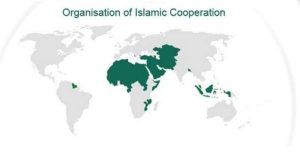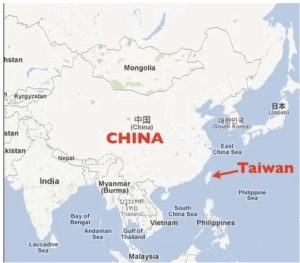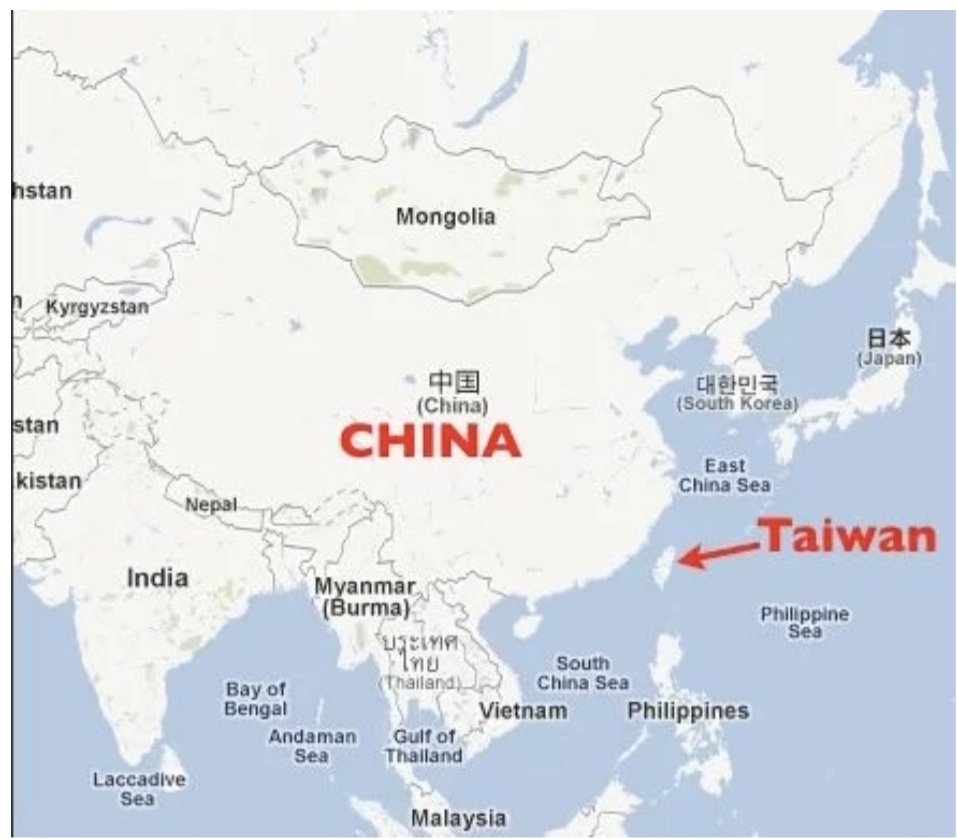CURRENT AFFAIRS 22-12-2021
Daily Current Affairs – Topics
- The Organization of Islamic Cooperation (OIC) India
- India Taiwan Relations
- Amendment to the Multi-State Cooperative Act, 2002
- New Labour Codes
- e-Chhawani Project
1.The Organization of Islamic Cooperation (OIC)- India
#GS2-Policies & Politics of Countries, India relationship with OIC.
Context
- A conference of the Organization of Islamic Cooperation’s (OIC) foreign ministers agreed to establish a humanitarian trust fund to address Afghanistan’s worsening economic crisis, which has left millions hungry this winter.
- Since the fall of the US-backed government in Afghanistan, this is the largest major conference on the country.
- India turned down the OIC’s offer to aid in a conversation between India and Pakistan in July 2021.
In depth information

- The Humanitarian Trust Fund is a non-profit organisation that helps those in need.
- The fund will be established under the auspices of the Islamic Development Bank to channel funds to Afghanistan in collaboration with other organisations.
- Allowing Afghanistan access to its financial resources is critical to preventing economic collapse, according to the report, which also recommends that feasible options for unfreezing billions of dollars in frozen central bank reserves be investigated.
- The summit also urged the international community to give immediate and ongoing humanitarian assistance to Afghanistan and the major nations hosting Afghan refugees.
Trust Fund by United Nation:
- The UN has also established a special trust fund to distribute much-needed cash directly to Afghans, using a method that taps into donor monies that have been frozen since the Taliban took power in August.
- It was established with the goal of providing liquidity to Afghan households in order for them to survive the winter and stay in their homeland.
- Germany is the fund’s first contributor. It had committed 50 million euros (USD58 million) to the project.
Organisation of Islamic Cooperation (OIC)
- With 57 member states, the OIC is the second largest international organisation after the United Nations.
- It is the Muslim world’s unified voice. In the spirit of promoting international peace and harmony among all peoples, it strives to promote and protect the interests of the Muslim world.
- It was founded by a decision of the historical summit, which took place on September 25, 1969, in Rabat, Morocco.
- Jeddah, Saudi Arabia is the headquarters.
India’s ties with the Organization of Islamic Cooperation (OIC):
- Bangladesh, which hosted the 45th session of the Foreign Ministers’ Summit in 2018, proposed that India, which is home to more than 10% of the world’s Muslims, be granted Observer status, but Pakistan objected.
- India made its first visit as a “guest of honour” at the OIC Foreign Ministers’ Meeting in 2019.
- This first-time invitation was considered as a diplomatic coup for India, especially in the wake of the Pulwama assault, when tensions with Pakistan were at an all-time high.
India’s connections with OIC members:
- India is not a member of the Organization of Islamic Cooperation. India, on the other hand, has been invited to the 46th Session of the Council of Foreign Ministers in 2019.
- India maintains solid bilateral relations with practically all of the other members.
- In recent years, relations with the UAE and Saudi Arabia, in particular, have greatly improved.
- In 2017, the Crown Prince of Abu Dhabi (UAE) attended the 68th Republic Day ceremonies as a special chief guest.
2.India-Taiwan relations
#GS2-India and its neighbours.
Context
- In a key step signalling their willingness to broaden the entire bilateral economic engagement, India and Taiwan have begun discussions for a free-trade agreement and the establishment of a semiconductor manufacturing plant in India by a Taiwanese firm.
- If the semiconductor manufacturing factory is built, it will be the second such facility built by a Taiwanese corporation outside of Taiwan, following a similar hub in the United States.
In depth information

India’s stance on Taiwan is as follows:
- India’s strategy toward Taiwan is clear and consistent, with a focus on fostering connections in areas such as trade, investment, and tourism.
- Trade, investment, tourism, culture, education, and other people-to-people exchanges are all facilitated and promoted by the government.
- Although India and Taiwan do not have formal diplomatic relations, the two countries do have commerce and people-to-people contacts.
Relations between India and Taiwan:
- Taiwan and India have been cooperating in a variety of fields despite the fact that they do not have formal diplomatic relations.
- Since 2010, India has refused to support the “one-China” policy.
Economic Relations between India and Taiwan
- India and Taiwan signed an amended bilateral investment agreement in 2018 to strengthen economic connections between the two countries.
- In India, there are more than 80 Taiwanese entities and companies. Hon Hai Precision Industry Co (FoxConn), MediaTek, Sanyang Corporation, Transcend, and others are among the companies.
- The volume of trade between India and Taiwan in 2019 was US$7 billion, up 20% year on year.
India’s Importance for Taiwan:
- Taiwan is eager to strengthen ties with a variety of countries.
- China has also increased military pressure, including repeated flights by Chinese warplanes near democratic Taiwan, which Beijing claims as its own and has not ruled out forcefully annexing.
Barriers to Expansion in India-Taiwan Relations
- Linguistic and cultural barriers could be one of the challenges to expansion.
- The other impediment is China’s demand that India adhere to its “One China Policy.” Following this policy makes sense if China shares India’s worries about its territorial integrity in Kashmir and the North East.
- India and Taiwan are commemorating 25 years of diplomatic relations.
- Delhi and Taipei have collaborated on a number of bilateral agreements in areas such as agriculture, investment, customs cooperation, civil aviation, industrial cooperation, and others. This expanding interdependence shows that it is time for India-Taiwan relations to be re-calibrated.
What should be done?
- Both parties can form a task force or a group of empowered individuals to sketch out a road map in a specific time range.
- The time has come to broaden cooperation in the healthcare industry.
- Taiwan could be a valuable partner in dealing with this challenge through its bio-friendly technologies.
3.Amendment to the Multi-State Cooperatives Act, 2002
#GS2- Government Policies
Context
- To close the Act’s flaws, the Centre recently agreed to alter the Multi-State Cooperative Societies (MSCS) Act, 2002.
In depth information
The Multi-State Cooperative Societies Act of 2002
- Although cooperatives are a state subject, many societies, such as sugar and milk cooperatives, banks, and milk unions, have members and operations in multiple states.
- Most sugar mills along the Karnataka-Maharashtra border, for example, get their cane from both states.
- The state of Maharashtra has the most, with 567, followed by Uttar Pradesh (147), and New Delhi (100).
- The MSCS Act was enacted to regulate cooperatives like this.
- They are registered under the MSCS Act because they have members from both states.
- All of the states in which they do business are represented on their board of directors.
- The central registrar has administrative and financial control over these societies, and the law makes it plain that no state government official has any jurisdiction over them.
- The act makes it easier for co-operatives to create and operate democratically as people’s institutions based on self-help and mutual aid.
- It allows them to advance their economic and social well-being while also providing functional autonomy, which was deemed vital by various cooperative societies, federations of cooperative societies, and the government.
The Act’s Highlighted Issues
- There appears to be a lack of government supervision over such communities on a daily basis.
- Multistate cooperatives, unlike state cooperatives, do not have to submit repeated reports to the state registrar.
- The central registrar can only inspect societies under extraordinary circumstances: a written request by not less than one-third of the board of directors, or not less than one-fifth of the total number of members of the society, must be given to the registrar’s office.
- Inspections can only take place once societies have been notified.
- Multiple layers of checks and balances exist in the system for state-registered organisations to ensure transparency in the process; similar layers do not exist in the case of multi-state societies.
- The national registrar’s on-the-ground infrastructure is sparse – there are no officers or offices at the state level, and most work is done online or via correspondence.
- Members of the organisations can only seek justice in Delhi, with state officials stating that they are unable to do anything more than transmit their concerns to the central registrar.
- Credit societies have taken advantage of these loopholes in the past, launching Ponzi schemes across the country.
- With the promise of big returns, these schemes mostly attract small and medium-sized investors. Fly-by-night businesses entice customers to invest and then shut down after a few instalments.
- Multiple complaints of this sort were received by the state commissioner in Maharashtra, but he was unable to take action due to a lack of ground employees capable of confirming the antecedents of such groups.
What kind of changes are likely to be made?
- The Centre is having comprehensive consultations with professionals from a variety of disciplines, including bankers, sugar commissioners, cooperative commissioners, and housing society federations, among others.
- To ensure better governance of societies, the centre may enhance its staff, first in Delhi and then in the states.
- Transparency will also be achieved through the use of technology.
4.New Labour Codes
#GS3- Indian Economy
Context
- By the start of the next fiscal year in 2022, India is expected to implement four new labour rules on pay, social security, industrial relations, and occupational safety.
In depth information
- Because labour is a concurrent issue, states are required to enact regulations on their own.
The New Labour Code’s Major Highlights
1.2019 Wage Code:
- Applies to all employees in the organised and unorganised sectors. A variety of facets of employment and work culture, in general, may alter as a result of these new standards, including employees’ take-home pay, working hours, and the number of weekdays.
2.2020 Industrial Relations Code
- From next year, employees in India may be able to enjoy a four-day workweek instead of the present five-day workweek.
- Employees will have to work for 12 hours on those four days in that instance, as the labour ministry has stated that the 48-hour weekly work requirement must be met even if the proposal is approved.
3.Code on Social Security, 2020:
- The regulations limit allowances to 50% of the salary, implying that half of the payment is basic wages, and provident fund contributions are computed as a percentage of basic earnings, which includes both the basic pay and the dearness allowance (DA).
- The employer’s percentage-based contribution to the PF balance is determined by the employee’s basic wage and dearness allowance under current labour standards.
4.Draft rules have already been released in 13 states:
- At least 13 states have already produced pre-publication draught rules on these laws. The only code on which states have pre-published draught rules is the Occupational Safety, Health, and Working Conditions Code.
- The Code on Wages has received the most draught notifications (24 states/UTs), followed by The Industrial Relations Code (20 states) and The Code on Social Security (18 states).
Issues
- Impact on take-home pay:
- A fundamental modification in the definition of “wage” would have an impact on take-home pay, but it would also increase retirement savings, which some companies oppose since it could raise employee costs.
- Firms will be responsible for a larger provident fund liability.
- Strikes may become more difficult:
- As a result of these new developments, industrial strikes may become more difficult, which will have a detrimental impact on employees.
Significance
- Four-day workday:
- Instead of the present five-day workweek, employees may be able to experience a four-day workweek starting next year.
- Management:
- It will also have a significant impact on how industrial companies treat their staff.
- Changes that will effect both firms and workers:
- These are projected to bring about significant changes.
- Employers would have more flexibility when it came to implementing short-term labour contracts.
- A new system of social security:
- Employees may profit from a new national pay floor, as well as a new social security net for informal and gig workers.
- Improve ease of doing business:
- The new industrial relations law would make it easier to do business by allowing companies with up to 300 employees to lay off, retrench, or close without seeking government approval.
- Currently, all businesses with fewer than 100 employees are exempt from government approval for layoffs, retrenchments, and closures.
5.e-Chhawani Project
#GS2- Government Policies
Context
- The Defence Minister of India recently launched the eChhawani project, which includes a GIS-based automatic water supply system for people of Cantonment Board.
In depth information
eChhawani Project Information
- eChhawani is a citizen-centric project of the Ministry of Defence’s Directorate General of Defence Estates.
- Through the unified eChhawani Portal, Cantonment Boards deliver online citizen services to more than 20 lakh citizens across 62 Cantonments across the country.
- Aims: To promote citizen involvement with Cantonment Boards by improving employee training, knowledge, and responsiveness to public requirements in a transparent and efficient manner.
- It allows citizens to use the Cantonment Board websites to access a variety of online services provided by the Cantonment Boards.
Our Courses
Watch Our Videos on YouTube

